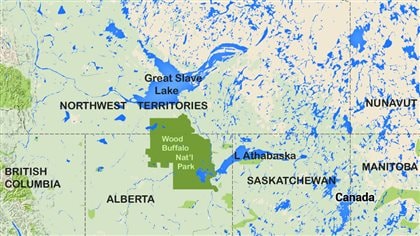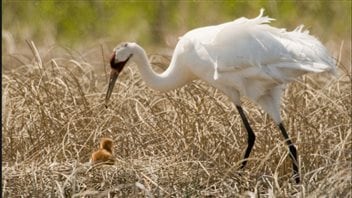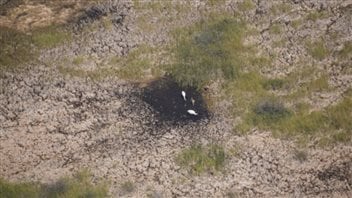
An aboriginal group in northern Alberta have written to the United Nations Educational, Scientific and Cultural Organization asking for a new designation for Canada’s Wood Buffalo National Park.
UNESCO declared Wood Buffalo a “world heritage site” in 1983.
The huge national park spans the Alberta-Northwest Territories boundary, and is the sit of one of the larges freshwater deltas in the world, formed by the Peace and Athabasca Rivers.

The Misikew Cree want UNESCO to declare the park “at risk”.
That would mean it is in danger of losing the attribute that made it a World heritage site in the first place.
The Peace river produces hydro-electric power providing much of the energy that powers the west coast, while the Athabaska flows through the huge area of oil sands extraction and is heavily used by that development
Misikew Chief Steve Courtoreille says the Bennett Dam on the Peace river in northern British Columbia has had catastrophic effects on the ecosystem since its construction in the late 1960’s.

He says the water levels throughout the delta fell, lakes dried up and the previously abundant muskrat, once central to his peoples’ way of life, virtually disappeared from the area.
Melody Lepine, a director for the Mikisew, said they are alarmed at the spread of invasive thistle weed in the 800,000 kilometre delta. Tthistle weed grows in dried-out areas that were once underwater. She says the 5,000 bison in the park avoid the thistle, limiting their access to water.
The Cree are concerned about yet another hydro project “Site C” on the Peace River which has been in the works since the 1970’s and now has both federal and provincial approval.
A spokesman for BC Hydro is quoted in the Globe and Mail newspapaer saying, ““This project is 1,100-kilometres upstream. It does not hold water; it lets water through. There would be no effect from this project on any aspect of the environment in the Peace-Athabasca delta, according to a federal-provincial panel”

The Cree also fear encroachment of oil sands development projects, especially one proposed mine just south of the park, proposed to begin in 2021.
Alison Ronson isexecutive director of the Canadian Parks and Wilderness Society in northern Alberta. She says just because the park is a protected area doesn’t mean it’s immune to what happens just outside its borders. Her group and the Misikew Cree are asking governments to create a 50-100km buffer zone around the park where development would be banned. Such a buffer could block or partially block the proposed mining project which is currently undergoing federal review.
Such a buffer would also protect part of the delta which is not within current park boundaries. Chief Courtoreille says it would also protect habitat for the endangered whooping crane.
The only North American site currently on UNESCO’s list of World Heritage in Danger is in the United States Everglades National Park in Florida
Alison Ronson says “When a site is placed on a list in danger it would be an obligation of the government to respond to that and work with UNESCO to make sure that this natural site, of importance both in Canada and internationally, is addressed and protected”.
A similar appeal earlier this year to UNESCO in regard to Gros Morne National Park in Newfoundland was successful. UNESCO called on Canada to create a buffer zone against proposed oil drilling just outside that world heritage park.







For reasons beyond our control, and for an undetermined period of time, our comment section is now closed. However, our social networks remain open to your contributions.